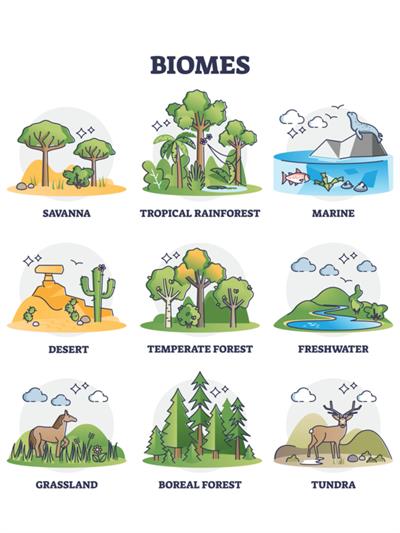PDF chapter test TRY NOW
A biome is a geographically extensive ecosystem where all flora and fauna are collectively found.
In a biome, a large community of vegetation and wildlife is adapted to a specific climate. It is the total collection of plant and animal life interacting within the biosphere. Abiotic factors such as relief, climate, soils and vegetation characterise a biome. They are broadly categorised as terrestrial biomes and aquatic biomes.
- A hotspot is an ecological region that has lost more than 70% of its original habitat.
- Himalayas, Western Ghats, Indo Burma region and Sundaland are the hotspots in India.
- There are 34 areas around the world that are qualified as biodiversity hotspots.
Terrestrial Biomes
Terrestrial biomes are a group of living organisms that live and interact with one another on land.
Temperature and precipitation are the important climatic factors that determine the boundary of a biome and the abundance of plants and animals found in each one of them. Some of the principal terrestrial biomes of the world are:
Temperature and precipitation are the important climatic factors that determine the boundary of a biome and the abundance of plants and animals found in each one of them. Some of the principal terrestrial biomes of the world are:
- Tropical Forest Biomes
- Tropical Savanna Biomes
- Desert Biomes
- Temperate Grassland Biomes
- Tundra Biomes

Niche
The unique functional role or place of a species in an ecosystem is called a Niche. It describes all the biological, physical and chemical factors that a species needs to live and thrive.
The unique functional role or place of a species in an ecosystem is called a Niche. It describes all the biological, physical and chemical factors that a species needs to live and thrive.
